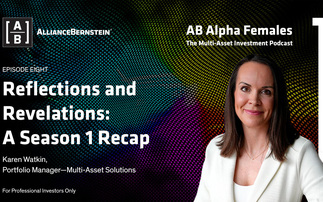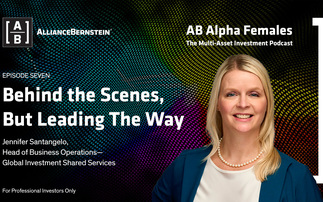After risk assets rallied throughout June and most of July, the US equity market gave up some ground from its all-time highs at the same time as the Federal Reserve cut rates for the first time since 2009. The 25bps rate cut wasn't as positively received by markets as many investors expected, and a sell-off ensued, further helped by President Trump's comments on the China trade dispute. Prices recovered in August, however, and have continued to rally in early September. Despite the uptick in market volatility, on a year-to-date basis equity markets are strong, and while there have been recent signs of yields increasing and safe-haven assets like gold selling off, it is still too early to call a sustained divergence between the performance of risk assets and defensive assets.
Asia plays its part
Against this backdrop we maintain our defensive positioning and continue reallocating away from risk assets. We remain biased to quality fixed income securities, as well as defensive equity income assets such as our position in dividend paying stocks in Asia. We are not adding further to Asian high yield bonds, but this remains a key area of conviction for us, and we have rotated some exposure from hard currency to local currency emerging markets debt and Chinese government bonds. To hedge out some of the currency risk in our emerging markets exposure, typically a major contributor to volatility for emerging markets fixed income, we are using a position in the Japanese Yen given emerging markets currency hedges are increasingly expensive. With positive yielding duration assets like US Treasuries at expensive levels, we are using our global mandate and leveraging the depth of resources from across Fidelity working to uncover sources of natural yield.
Hunting for natural yields
While near-term volatility and medium-term economic uncertainty are factors we are working to manage, there are systemic headwinds continuing to face income investors that cannot be ignored. By now, investors are well accustomed to the term ‘reach-for-yield', where aggressively expansive monetary policy has driven yields to historically low levels, pushing investors further up the risk spectrum to continue earning attractive natural yields (yields paid out of income not capital). While this phenomenon is not new, in the past year it has become even more pronounced as global levels of negative yielding debt have increased significantly. Figure 1.0 below points to this rapid expansion in negative yielding assets since October 2018, and while there will undoubtedly be movement in this figure as rates rise and fall in the near term, with the world's central banks almost unanimously dovish the longer-term trend is not pointing to a reversal in the overall levels of negative yielding debt. In short, the context we are operating in as income-focused investors has changed dramatically.
Global negative yielding assets: driving the "reach-for-yield"
Source: Bloomberg, Bloomberg Barclays Global Aggregate Negative Yielding Debt Market Value (USD), as at 09 September 2019
Focusing on the fundamentals
One of the research teams that supports us in the management of our income portfolios is the Manager Research team, who help us select the optimal building blocks for portfolios. Their job does not stop with recommendations though, and an important part of their job is ongoing monitoring and ensuring there is no style drift in the managers we use to allocate to asset classes. We hold ourselves to the same standard and manage this risk in our funds as well. Ensuring that our portfolios ‘do what they say on the tin' is always front of mind for us. With the headwinds of low and negative yields discussed above unlikely to recede anytime soon, we maintain our focus on achieving an attractive natural yield for our clients and will not compromise on the equally important responsibility according to the fund's objectives of capital preservation and lower volatility.
While some areas of fixed income, such as US high yield, have benefitted from the ‘reach-for-yield' and performed strongly, we believe that investors ignore fundamentals at their peril. All of our investment decisions are made with an acute focus on the risk-reward profile, and in this late-cycle environment, we remain mindful of fundamentals, and will not view any asset class as attractive based on its yield characteristics in isolation. With an increasing scarcity of defensive assets that look attractive, and investors moving down the capital structure to earn yields, our focus remains on our objectives.
Important information
This information is for investment professionals only and should not be relied upon by private investors. The value of investments and the income from them can go down as well as up and clients may get back less than they invest. Past performance is not a reliable indicator of future returns. Investors should note that the views expressed may no longer be current and may have already been acted upon. These funds use financial derivative instruments for investment purposes, which may expose the funds to a higher degree of risk and can cause investments to experience larger than average price fluctuations. These funds invest in overseas markets and so the value of investments can be affected by changes in currency exchange rates. There is a risk that the issuers of bonds may not be able to repay the money they have borrowed or make interest payments. When interest rates rise, bonds may fall in value. Rising interest rates may. Reference to specific securities should not be construed as a recommendation to buy or sell these securities and is included for the purposes of illustration only. Issued by Financial Administration Services Limited, authorised and regulated by the Financial Conduct Authority. Fidelity, Fidelity International, the Fidelity International logo and F symbol are trademarks of FIL Limited.











